Where to dig in?
A thriving garden requires the right tools for success. You’ll need quality digging implements like trowels, garden forks, and spades to prepare your soil properly. Don’t forget weeding tools with ergonomic grips to eliminate unwanted growth without straining your back. Essential planting tools include a hori hori knife and broadfork, while pruning equipment keeps plants healthy and shaped. Accessories like wheelbarrows, garden gloves, and plant markers round out your toolkit. The sections below explore each category in detail.
Must-Have Essential Gardening Tools for Healthy Garden Beds
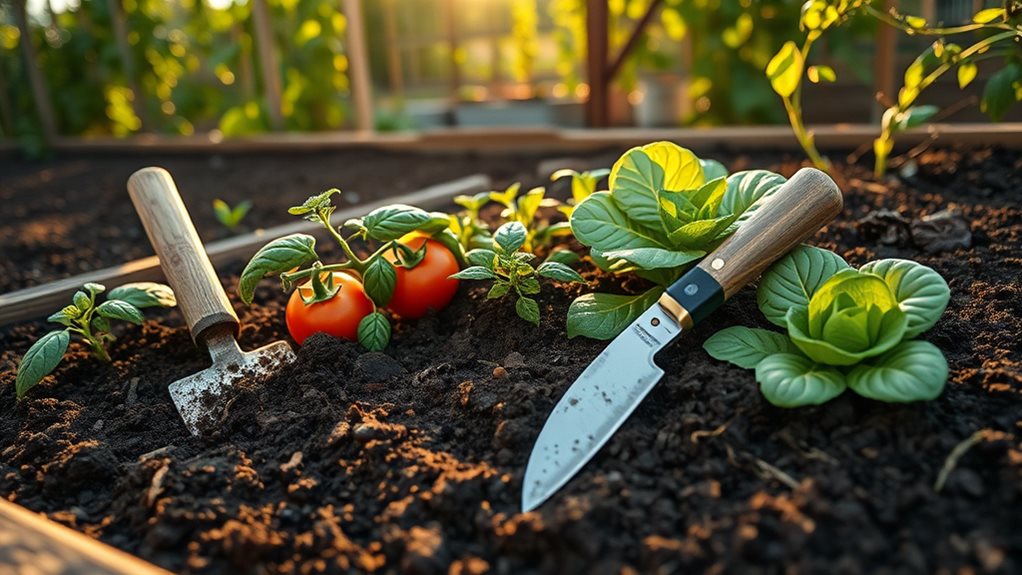
While creating a thriving garden requires knowledge and patience, having the right digging tools makes all the difference in establishing healthy garden beds. You’ll need a few essential implements to prepare your soil properly.
A quality trowel is your go-to tool for transplanting seedlings and planting in raised beds. For turning soil without damaging roots, invest in a garden fork with ergonomic handles to guarantee they’ll serve you for many seasons. When planting trees or installing fence posts, a durable spade with sharp blades will make your work much easier. Don’t forget a stirrup hoe, which excels at breaking up compacted soil and mixing in amendments. A round point shovel is essential for digging, trenching, and transplanting larger plants in your garden. For deeper soil aeration and breaking up compacted ground, a sturdy broadfork provides excellent results without disturbing beneficial soil layers.
Choose tools with comfortable grips, balanced weight distribution, and durable materials to certify they’ll serve you for many seasons.
Weeding Tools to Keep Your Garden Pristine
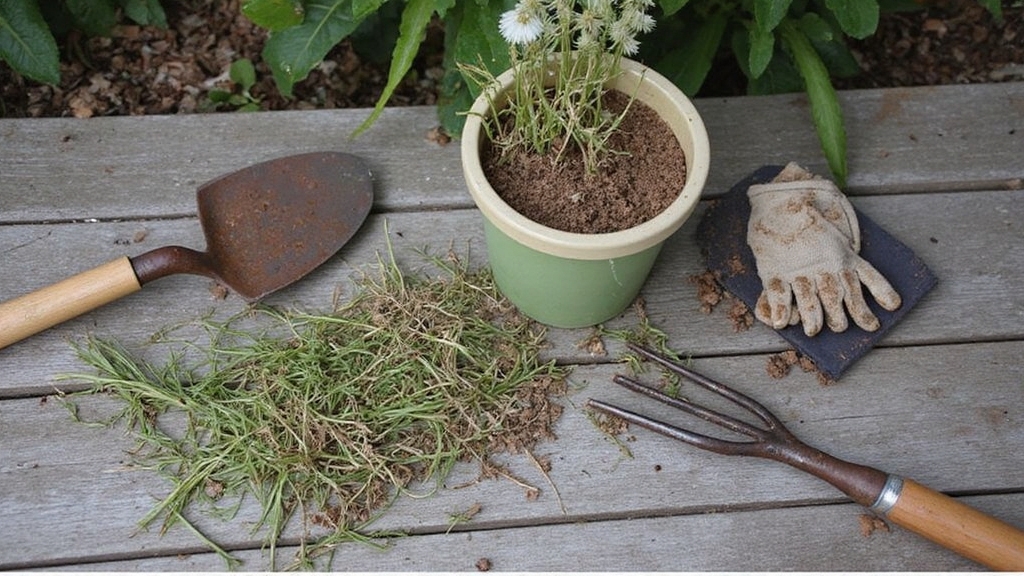
A pristine garden requires more than just proper digging tools—you’ll need specialized weeding implements to maintain your garden’s beauty. Hand weeders with forked tips excel at removing deep-rooted invaders like dandelions and thistles, while long-handled options save your back from strain. The versatile Gardeners Multi-Tool combines four essential functions in one convenient implement for efficient garden maintenance. For premium performance, the Fiskars Xact Extractor offers exceptional leverage for removing deep-rooted weeds without straining your back.
The secret to garden perfection lies in specialized weeding tools that protect your investment and spare your body unnecessary strain.
Consider your garden’s specific needs when selecting tools:
- For precision work, choose ergonomic hand weeders with cushioned grips
- For larger areas, invest in scuffle hoes or weeding rakes
- For versatility, a hori hori knife serves multiple functions
- For stubborn taproots, use dedicated dandelion weeders
Quality tools made from stainless steel resist rust and maintain sharpness longer. Remember, the right weeding tool protects your soil structure while efficiently removing unwanted growth, making garden maintenance both easier and more effective.
Planting Essentials for Successful Cultivation
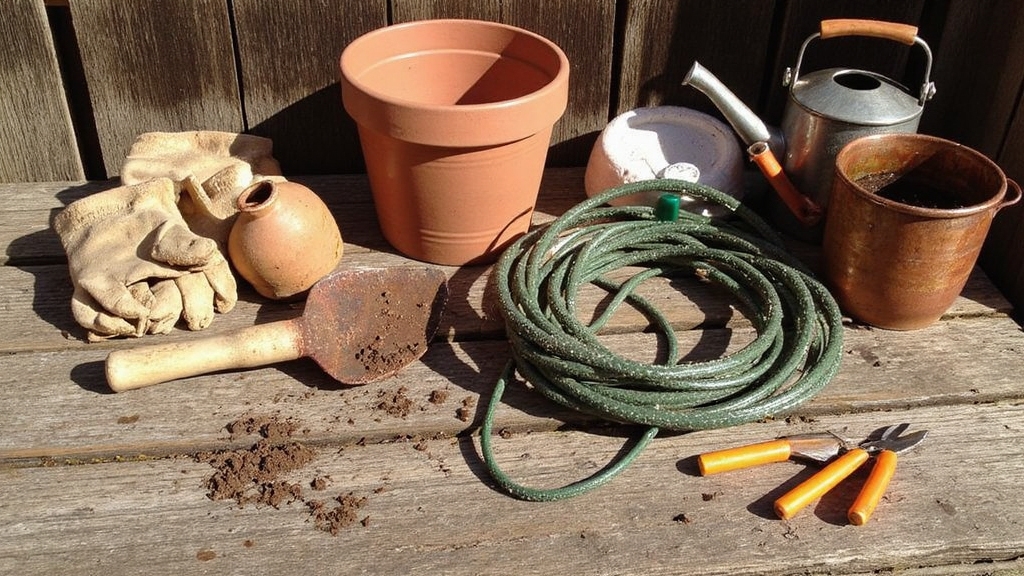
Successful cultivation begins with having the right planting tools at your fingertips. You’ll need specialized equipment to prepare soil, create proper planting holes, and guarantee your plants establish strong roots. Among the essential tools, the Stainless Steel Hori Hori Garden Knife is a versatile tool that combines multiple functions for efficient gardening. Before planting, ensure your chosen location receives 6-8 daily hours of sunlight for optimal plant growth.
| Tool | Purpose |
|---|---|
| Trowel | Transplanting seedlings and moving soil |
| Hori Hori Knife | Creating holes and measuring planting depths |
| Garden Fork | Breaking up compacted soil before planting |
| Broadfork | Aerating large soil areas without disrupting layers |
| Auger | Drilling deep holes for larger plants efficiently |
When planting, follow these key steps:
- Prepare soil using forks to break compaction
- Create appropriately sized holes for your plants
- Place plants at correct depth using marked tools
- Water thoroughly after planting
- Apply mulch to retain moisture and prevent weeds
Pruning Equipment for Plant Health and Shape
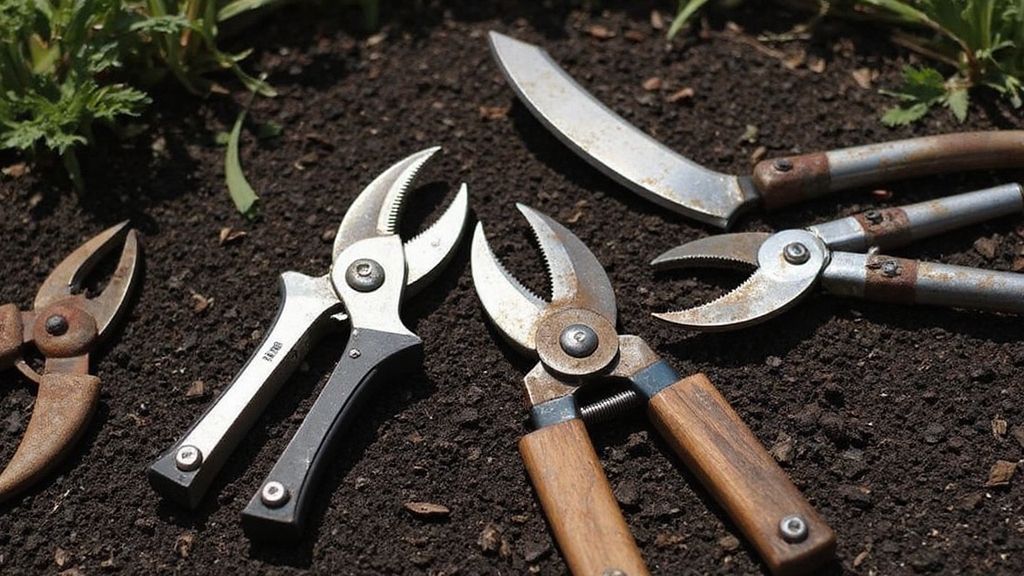
Proper pruning equipment forms the foundation of effective plant maintenance, allowing you to shape growth patterns and promote overall health. You’ll need specific tools based on the size and type of branches you’re cutting. Hand pruners work well for small stems, while loppers give you leverage for thicker branches. For even larger cuts, invest in a quality pruning saw that fits comfortably in your hand. Needle-nose pruners are excellent for accessing small, tight areas where standard pruners can’t reach. The Felco F-2 model is particularly recommended by professionals for its exceptional durability and reliable performance.
Quality pruning tools enable precise plant shaping and health promotion—choose the right size for every branch.
- Bypass secateurs make clean cuts on soft, green stems without crushing plant tissue
- Anvil secateurs provide extra power for woody, dead branches that need more force
- Long-reach or pole pruners help you access high branches safely from the ground
- Sharp, clean blades prevent disease transmission between plants
- Protective gloves shield your hands from thorns, sharp edges, and potential injuries
Handy Accessories Every Gardener Needs
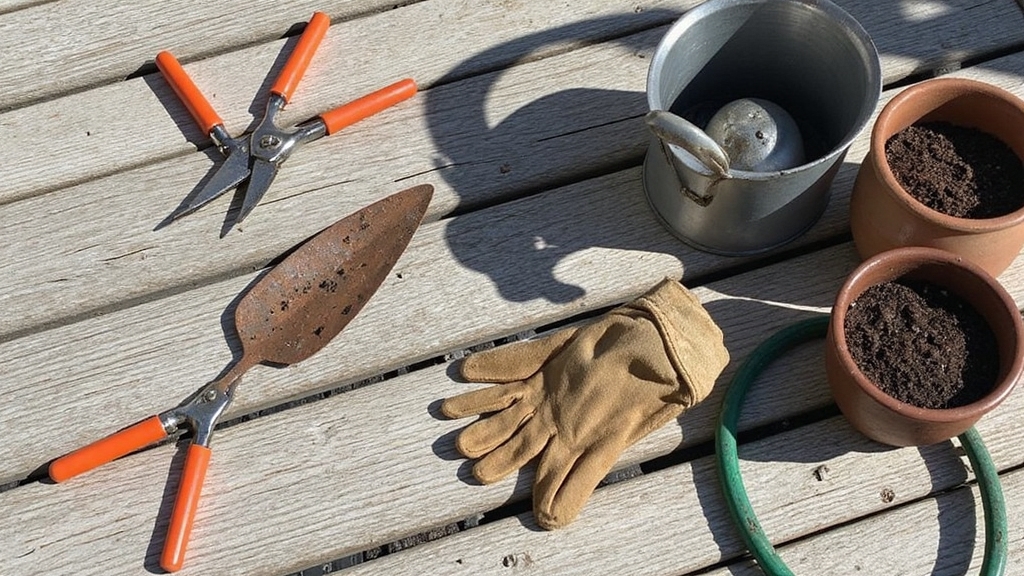
Beyond the essential digging and pruning tools, a well-equipped gardener’s arsenal includes numerous accessories that make garden work easier, more efficient, and enjoyable. These items often make the difference between gardening success and frustration.
Organization and Transport
Garden carts and wheelbarrows move heavy materials without strain
Toolboxes and aprons keep your tools organized and accessible
Plant Support and Protection
Trellises and stakes support climbing plants and tall flowers
Garden nets and markers protect and identify your plants
Quality gardening gloves offer protection from thorns, cuts, and soil irritants while allowing dexterity for delicate tasks.
The Feverfew Garden Company offers touch screen compatible gardening gloves that maintain functionality while protecting your hands during planting and weeding tasks.
Soil Preparation Helpers
Broadforks and core aerators improve soil drainage and aeration
Augers make quick work of holes for trees and posts
Don’t overlook small but mighty accessories like garden twine, gloves, and watering cans—they’re daily workhorses in any garden.
Frequently Asked Questions
How Often Should I Sharpen My Gardening Tools?
You should sharpen most garden tools once or twice yearly, depending on how often you use them. Check for these signs that sharpening is needed:
- You’re struggling to cut or dig
- Edges look rounded or nicked
- Tools scrape rather than cut cleanly
Sharpen pruning tools more frequently during active gardening seasons. Clean your tools after each use, as dirt and sap will dull blades faster. Remember, tools used in rocky or sandy soil need more frequent attention.
Can Gardening Tools Be Safely Stored Outdoors?
You can store gardening tools outdoors, but with proper protection. Use galvanized buckets, wall hooks, or a garden shed to keep tools off the ground. Always cover tools with a waterproof tarp if they’re exposed to elements.
For best results:
- Choose a well-ventilated location
- Apply protective oil to metal parts
- Check regularly for rust or damage
Are Electric or Manual Gardening Tools Better for Beginners?
Manual gardening tools are typically better for beginners. You’ll find them more straightforward to use, requiring no technical knowledge or complex maintenance. They offer greater precision for delicate tasks like pruning and transplanting, helping you develop fundamental gardening skills.
Manual tools are also more affordable, which lets you invest gradually as your expertise grows. While electric tools save time on larger projects, they’re often more complicated and may feel overwhelming when you’re just starting your gardening journey.
Which Tools Are Absolutely Essential for Container Gardening?
For successful container gardening, you’ll need these absolute essentials:
- Quality containers with drainage holes
- Good potting mix (not garden soil)
- Watering can or hose with gentle spray
- Garden trowel for planting and soil work
- Pruning shears for maintenance
- Gloves to protect your hands
Don’t worry about acquiring everything at once. Start with these basics, and you’ll be well-equipped to grow healthy container plants without overwhelming yourself.
How Do I Prevent Metal Garden Tools From Rusting?
To prevent your metal garden tools from rusting:
- Clean tools after each use, removing all soil and debris
- Dry tools thoroughly before storing them
- Apply a light coat of mineral oil or WD-40 to metal surfaces
- Store your tools in a dry place, away from moisture
- Consider using silica gel packets in your tool storage area
You’ll extend your tools’ life by wiping them with a cloth soaked in vinegar once monthly, followed by oil application.
Conclusion
You’re now equipped with knowledge of all the essential gardening tools needed for success. Start with quality digging tools, add effective weeding implements, and include proper planting equipment. Don’t forget pruning tools that keep your plants healthy, along with those handy accessories that make gardening easier. Investing in these fundamentals will transform your outdoor space, save you time, and help your garden thrive for years to come.

